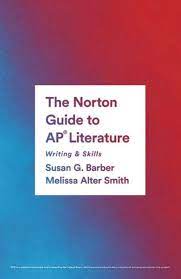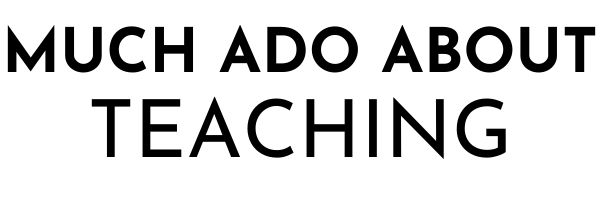Many works of literature explore a character’s sense of lacking something important in
life. The character perceives an unfulfilled need which may be emotional, spiritual, financial, or
something the character does not understand or cannot articulate. Either from your own reading
or from the following list, choose a work of fiction in which such a feeling is explored. Then, in a
well-written essay, analyze how the character’s sense of an unfulfilled need contributes to an
interpretation of the work as a whole. Do not merely summarize the plot.
Thesis: Most students received the thesis point. They found a work of literature and stated
how a character had a particular “unfulfilled need.” Many of the essays I scored discussed
“emotional” unfulfilled needs–the character was looking for a need of being loved, i.e. Jay
Gatsby pursuing Daisy, or the creature from Frankenstein wanting a loving companion creature.
Other unfulfilled needs included the need for revenge, power, identity, or purpose. Of the works
listed, many students wrote on The Awakening, Frankenstein, Brave New World, Macbeth,
Invisible Man, Jane Eyre, or A Raisin in the Sun. I scored several good essays on works not on
the suggested works list, such as Fences, Hamlet, Great Gatsby, Death of a Salesman, or
Metamorphosis.
Evidence and Commentary:
A good number of essays I scored were either 1-2-0 or 1-3-0. As an Early Table Leader and
scorer, I disciplined myself on the first reading of any essay to first look for and find a thesis
statement, then I looked diligently for places in the essay where a student provided specific
evidence from the novel or play (or movie, children’s book..–yes, even the Grinch who had a big
unfulfilled need in one essay) supporting their argument of the character’s unfulfilled need. If a
student faltered and scored a 1-2-0, usually it was due to not having a clear line of reasoning.
We obviously want our students to make the claim of an unfulfilled need of the character and
then provide specific evidence from the selection which demonstrates that character’s specific
need, but they also need to follow it up with commentary on why they think their evidence from
the novel or play supports the claim of the character’s unfulfilled need and connect it to an
interpretation of the work as a whole. When I found a line of reasoning somewhere in the essay,
then I determined does this essay move into the category of a 1-3-0 or higher? I asked myself
did the student sustain the argument consistently throughout the essay with even more specific
evidence supporting the claim? 1-4-0 essays, as we look at Row B 4, consistently provided
specific evidence to support all claims in a line of reasoning and their commentary was
consistently explaining how the evidence supported that line of reasoning. In addition, a 1-4-0
will clearly and consistently explain how the unfulfilled need leads to the student’s interpretation
of the work as a whole.
Sophistication:
Less than 15% of students earned the sophistication point. As Row C suggests, the student
must develop a complex literary argument, and the rubric suggests four different ways a student
can do that. Most of the 1 sophistication point I scored fit into the category of #1–the student
explored complexities or tensions within the selected work. I scored several essays with a
sophistication point for using #2, putting the student’s interpretation into a broader context–a
Victorian feminism historical (social, cultural, political) context in works such as Jane Eyre or
Wuthering Heights. This year I did not score many essays with the sophistication point for
students who provided “alternative interpretations” or themes of the work as a whole. I did have
several students who had a sophisticated style of analysis #4 which was consistently vivid and
persuasive.
Classroom teaching practice:
- Students need to be taught to AP (answer the prompt, particularly on Q3). Q3 is a
different animal than Q1 or Q2. Some students load up their intro paragraph informing us
of all the literary devices they are going to discuss and organize their paragraphs as
such. No, stick to the prompt. Focus on what is or are the “unfulfilled need or needs” of
a character and what specific evidence from the text of your work will support the claim
or claims and how does that connect to an interpretation of the work as a whole? - Students need some specific instruction on how and where to state their clear lines of
reasoning explaining how their evidence supports the claim, and how the claim supports
their interpretation of the work as a whole. One thing I did in my classroom in the spring
with my AP students is that I have them select a Q3 exam question from the past twenty
years of their choosing. They usually pick the hardest question they think they can find.
Then, they select one of the 5 novels or plays we have studied in class over the school
year. So, they give me the prompt and tell me which literary work I need to analyze, then
I tell them I will type at least a 1-3-1 in front of them. I put my document on the projector
screen for the whole class to see, but the real help I give them is to tell them every single
thought that is going through my head. Every 10 minutes I read the key prompt sentence
aloud and ask myself aloud, “Am I answering all aspects of what this prompt requires?”
If the answer is no, I tell them what I have not addressed in the essay so far and why I
need to get to other complexities in my analysis or earn a sophistication point through
multiple interpretations of this work. I need to say something I have not said before and
still provide specific evidence from the text on why it supports another interpretation. AP
Lit and Comp teachers need to do more modeling of their own writing and explain the
“how and why” of the teacher’s writing and explain aloud what goes on in their own
analysis. - AP Lit and Comp teachers need to help guide students through the deductive and
inductive reasoning processes of writing body paragraphs. If I am writing a body
paragraph about an unfulfilled need of a character. I would: 1) start with a claim of the
unfulfilled need of the character; 2) provide specific evidence from the text that supports
the claim; 3) explain through commentary how this evidence has a clear line of
reasoning to support the claim; 4) then, through additional commentary, explain how the
unfulfilled need connects to an interpretation or interpretations of the meaning of the
work as a whole.

Jeff H. Roper has been an AP Lit and Comp teacher for twenty years in Andover, Kansas. He teaches Dual Credit English through Butler County Community College and AP Literature. He has his Masters in English from Wichita State University. Jeff has been an AP reader since 2004, a Table Leader for three years, and an Early Table Leader for the past two years. Jeff has served on the AP LIt Development Committee from 2020-2023 and is currently an AP independent contractor.
Feature image: Photo by chester wade on Unsplash












